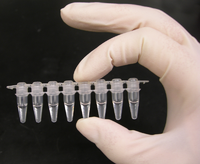
Photo from wikipedia
Familial hypercholesterolemia (FH) is an autosomaldominant hereditary lipid disorder, which can eventually cause the premature coronary artery disease (CAD). Recently, FH has been recognized as relatively common disease due to… Click to show full abstract
Familial hypercholesterolemia (FH) is an autosomaldominant hereditary lipid disorder, which can eventually cause the premature coronary artery disease (CAD). Recently, FH has been recognized as relatively common disease due to its prevalence (1 in 250-300 general population) (1), and the estimated number of FH patients in Japan is estimated to be approximately 300,000. Although the guidelines list several available diagnostic tools for FH, FH is undetected in most cases. Thus, the identification of undetected FH is important for preventing premature CAD and sudden cardiac death. The diagnosis of FH can be based on either in clinical criteria or genetic testing. In the guidelines provided by the Japan Atherosclerosis Society and Asian Pacific Society of Atherosclerosis and Vascular Diseases, patients who meet two or more of the criteria listed below should be diagnosed with FH (2). ● Hyper-low density lipoprotein cholesterol (LDL)cholesterolemia (untreated LDL-cholesterol 180 mg/dL) ● Tendon xanthoma (thickening of tendons on the dorsal side of hands, elbows, knees, or Achilles’ tendon hypertrophy) or xanthoma tuberosum ● Family history of FH or premature CAD (within the patient’s second-degree relatives) Although it is not essential, the positive detection of known pathogenic mutations ( with hyper-LDLcholesterolemia) can afford a definitive diagnosis of FH (2, 3). In addition, when a proband is diagnosed with FH via a genetic testing, it provides a definite diagnosis of FH in the family who exhibits hyper-LDL-cholesterolemia. Thus, when physicians diagnose an index FH patient, cascade screening of the family may provide an opportunity to conduct genetic testing to detect FH. Genetic testing to detect FH is performed using either pathogenic variants in the LDL receptor (LDLR) gene, Apolipoprotein B (ApoB), and proprotein convertase subtilisin/ kexin type 9 (PCSK9), or whole-gene sequencing. Causative genetic mutations can be detected in approximately 60-80% of cases. In genetically-defined FH cases, the majority of patients exhibit mutations in the LDL receptor (LDLR; 79%) gene, and others mutations in Apolipoprotein B (ApoB; 5%), proprotein convertase subtilisin/kexin type 9 (PCSK9; <1%), and some accessory genes (4). Meanwhile some FH patients (approximately 10%) have a genetic background of structural polygenic variations (4, 5). In contrast with heterozygous FH (HeFH), homozygous FH (HoFH), which has causative pathogenic gene mutations in both alleles, is rare (approximately 1 in 1 million in the general population) and exhibits severe clinical features (2). However, there is a phenotype of “severe HeFH,” which is associated with severe clinical feature, similarly to HoFH. Thus, when physicians encounter very severe hypercholesterolemia, a clear definitive diagnosis is required to differentiate between HoFH and HeFH, as most HoFM patients require prompt induction of more advanced LDL-cholesterol lowering therapies, including LDL-apheresis and/or microsomal triglyceride transfer protein inhibitor. Okada et al. presented a case of “severe HeFH” in which the patient exhibited severe clinical features of FH, including supravalvular aortic stenosis. Although her causative mutations could not be identified by whole exome sequencing (WES) using next generation sequencing (NGS), the multiples ligation-dependent probe amplification (MLPA) technique disclosed structural polygenic variations in LDLR (6).
Journal Title: Internal Medicine
Year Published: 2022
Link to full text (if available)
Share on Social Media: Sign Up to like & get
recommendations!